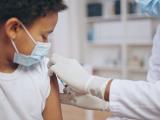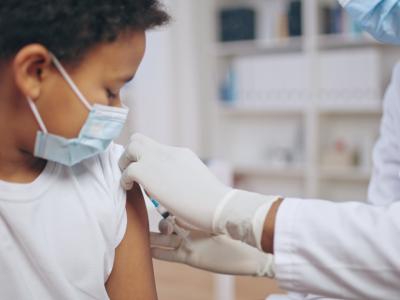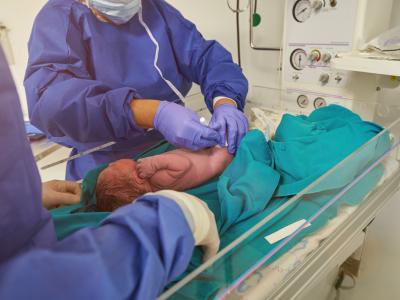Undocumented immigrants were at a sharply higher risk of death during the worst years of the COVID-19 pandemic, a finding that has implications for future health emergencies, researchers reported in a new study based on an analysis of death certificates and other demographic data of people who died from natural causes in California.
Other studies have found racial and ethnic disparities for COVID deaths, but the new study is the first to look at the relationship between immigration status and other sociodemographic factors. The team, led by researchers at the University of California at Santa Cruz, detailed their findings last week in the American Journal of Public Health.
Undocumented group had 55% increase in death rate
For the study, the team examined death certificates for all California residents ages 25 and older who died from natural causes in the state between 2016 and 2023. The death certificates included birth country and whether decedents had a valid Social Security number, which allowed researchers to ascertain if people were documented or undocumented immigrants. They also included a range of other factors, including sex, age, race/ethnicity, educational attainment level, and occupation type.
Then the group looked for differences in pandemic-era survival outcomes, modeling absolute and relative excess mortality from March 2000 through May 2023, based on prepandemic mortality and other seasonal variables.
For potentially undocumented immigrants, researchers estimated a 55% increase in death rate above the prepandemic level, compared to 22% for immigrants who appeared to be documented and 12% for US-born citizens.
Alicia Riley, PhD, MPH, who led the group and is an associate professor of sociology at UC Santa Cruz and core faculty member in the UC Santa Cruz’s Global and Community Health Program, said in a university press release that her main takeway from the findings was just how high excess morality was in potentially undocumented immigrants. “A 55% increase in deaths above what was normal prior is really shocking, on a community level," Riley said. "Families are still living with the consequences of those deaths today.”
What drives higher death risks?
She added that early in the pandemic, there was a rush to explain disparities in COVID deaths, but there has been little scientific evidence on what drove the trends. The team found that among all subgroups, Latino essential workers who were potentially undocumented were hardest hit, with a staggering 91% increase in deaths compared with 8% for the White US-born subgroup.
Even though California had lockdowns and free testing to protect everyone, risk was not experiences equally, Riley said. “Mortality was clearly stratified by immigration status, and that should raise alarms.”
The team wrote that there are several explanations for the inequities. For example, they said undocumented workers are more likely to work jobs that increased their exposure to the virus and lacked benefits such as sick leave, public medical insurance, and unemployment insurance. Stress over fear of arrest or deportation could have health impacts and may have posed barriers to seeking healthcare or reporting workplace safety violations.
Implications for health policies
Riley said the findings raise questions about how the role of excluding immigrants influences the exposure risk to infectious diseases and delays in healthcare that can mean the difference between life and death. Over the past year, other public health experts have raised similar concerns about the risks of H5N1 avian flu to potentially undocumented dairy and poultry workers, as well as the public health risk of illness going undetected because workers are afraid to step forward.
The findings also come amid aggressive enforcement actions and state rollbacks of Medicaid access to undocumented immigrants.
“There are very close connections between how we enforce immigration policy and the health of families across our communities,” she said. “We really need to be thinking about how we can expand access to things like worker protections, health insurance, and paid leave, so that everyone is truly protected.”




















